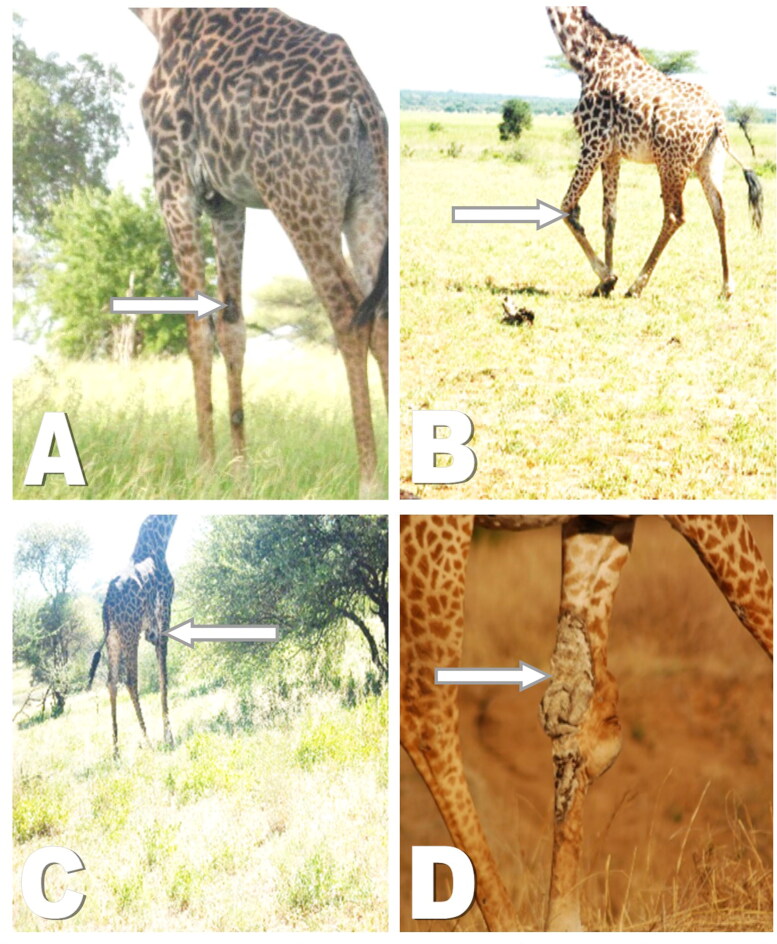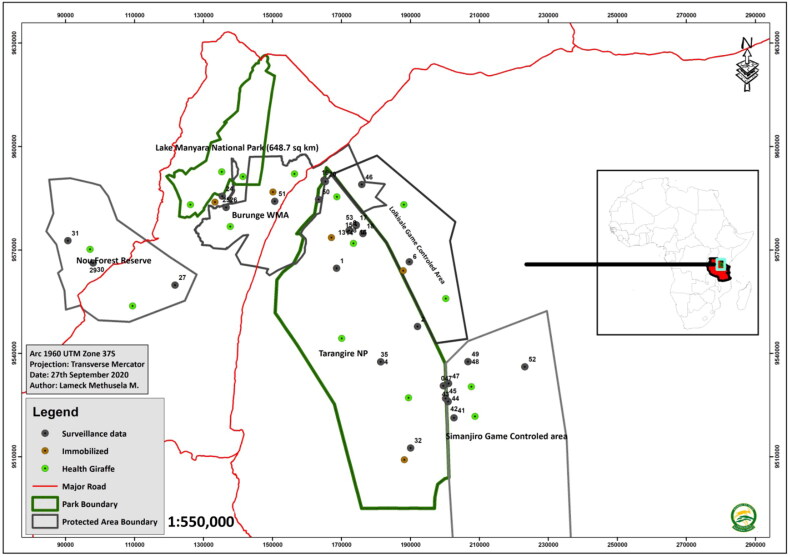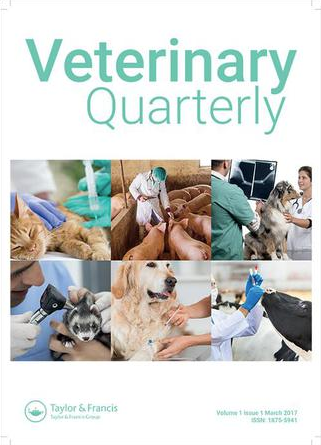Prevalence and histopathological characterization of Masai Giraffe (Giraffa camelopardalis tippelskirchi) skin disease in Tarangire-Manyara ecosystem, Northern Tanzania.
IF 7.9
2区 农林科学
Q1 VETERINARY SCIENCES
引用次数: 0
Abstract
Abstract Background Masai Giraffes have declined dramatically in recent decades due to loss of habitat and illegal hunting. Hence, it is critically important that the epidemiology and etiology of so-called giraffe skin disease (GSD) is understood well. Aim To assess the prevalence and histopathological characteristics of GSD in the Tarangire-Manyara Ecosystem (TME), northern Tanzania. Methods The study used road transects to gather field information on GSD. Eighty-four giraffes were sighted by systematic random sampling in the six study sites. Examination of giraffes involved body distribution of lesions, severity of the lesions and whether they were associated with age and sex of the affected giraffes. Five giraffes with GSD were immobilized for tissue collection and histopathological analysis. Results Prevalence among adults was 79%. Affected animals typically had 1–5 lesions which were mostly moderate and were predominantly observed on the forelegs. GSD positivity rate was higher among females versus males, whereas males had a higher rate of severe lesions and generally had more lesions than females. Calves showed no lesions. All tissue sections from five affected giraffes showed the presence of large quantities of fungal elements (hyphae and spores) that involved hair shafts and sub-cutaneous tissue after staining with Grocott Methenamine Silver as special fungal staining technique. Conclusions Our findings suggest the involvement of fungal infection in GSD pathogenesis. Clinical relevance We recommend further characterization of the lesions using modern molecular techniques and culture to identify primary and secondary or opportunistic etiologies, and the order in which the pathogens occur in the lesions.



坦桑尼亚北部Tarangire-Manyara生态系统马赛长颈鹿(Giraffa camelopardalis tippelskirchi)皮肤病的患病率和组织病理学特征
背景:近几十年来,由于栖息地丧失和非法狩猎,马赛长颈鹿数量急剧减少。因此,了解所谓的长颈鹿皮肤病(GSD)的流行病学和病因学至关重要。目的:评估坦桑尼亚北部Tarangire-Manyara生态系统(TME)中GSD的患病率和组织病理学特征。方法:采用道路横断面法收集GSD的现场资料。通过系统随机抽样,在六个研究地点发现了84只长颈鹿。对长颈鹿的检查包括病变的身体分布、病变的严重程度以及它们是否与受影响长颈鹿的年龄和性别有关。将5只患GSD的长颈鹿固定,进行组织采集和组织病理学分析。结果:成人患病率为79%。受影响的动物通常有1-5个病变,大多数是中度的,主要在前腿上观察到。GSD在女性中的阳性率高于男性,而男性的严重病变率高于女性,并且通常比女性有更多的病变。小腿未见病变。用Grocott Methenamine Silver(一种特殊的真菌染色技术)染色后,5只受感染长颈鹿的所有组织切片显示存在大量涉及毛干和皮下组织的真菌成分(菌丝和孢子)。结论:我们的研究结果提示真菌感染参与了GSD的发病机制。临床相关性:我们建议使用现代分子技术和培养进一步表征病变,以确定原发性和继发性或机会性病因,以及病原体在病变中发生的顺序。
本文章由计算机程序翻译,如有差异,请以英文原文为准。
求助全文
约1分钟内获得全文
求助全文
来源期刊

Veterinary Quarterly
VETERINARY SCIENCES-
CiteScore
13.10
自引率
1.60%
发文量
18
审稿时长
>24 weeks
期刊介绍:
Veterinary Quarterly is an international open access journal which publishes high quality review articles and original research in the field of veterinary science and animal diseases. The journal publishes research on a range of different animal species and topics including: - Economically important species such as domesticated and non-domesticated farm animals, including avian and poultry diseases; - Companion animals (dogs, cats, horses, pocket pets and exotics); - Wildlife species; - Infectious diseases; - Diagnosis; - Treatment including pharmacology and vaccination
文献相关原料
| 公司名称 | 产品信息 | 采购帮参考价格 |
|---|
 求助内容:
求助内容: 应助结果提醒方式:
应助结果提醒方式:


